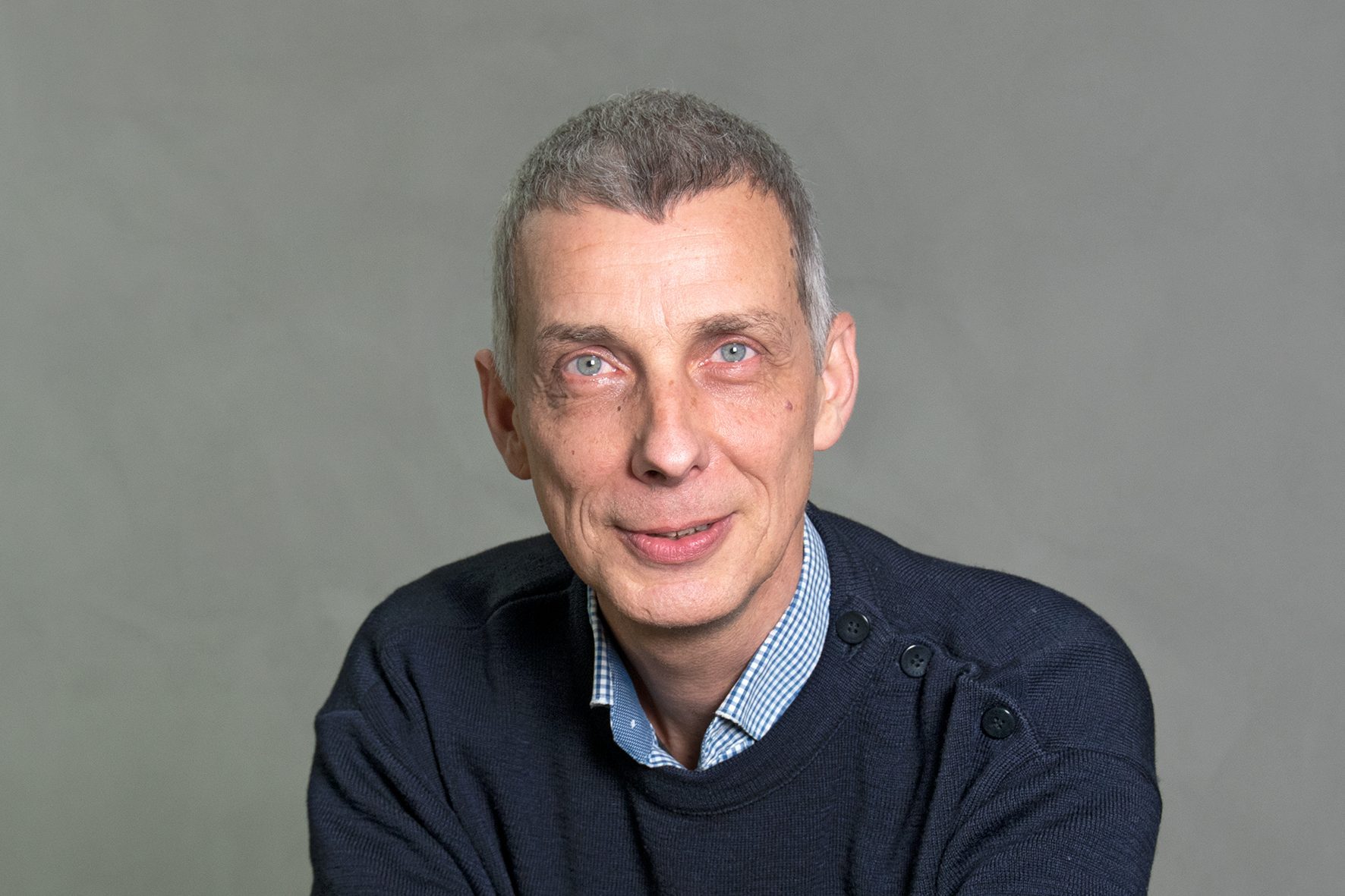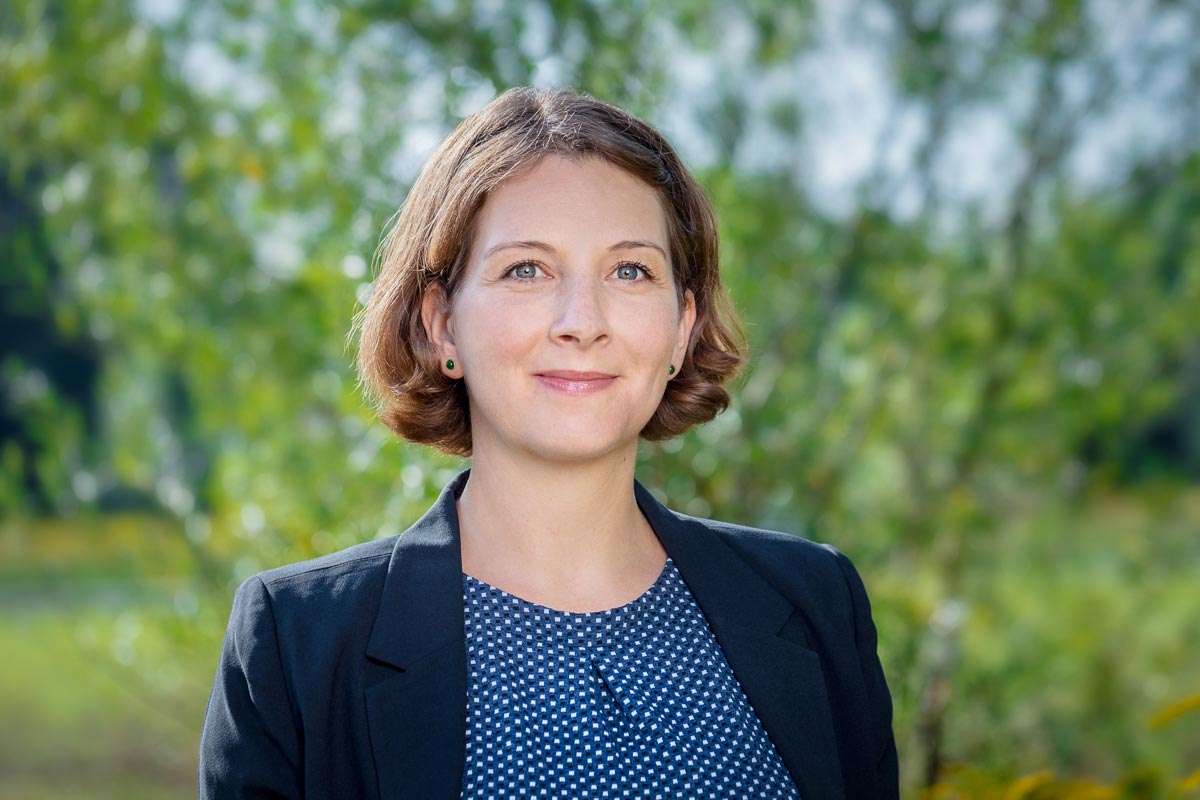
Snow algae – The secret resource for rejuvenating cures and omega-3 fatty acids
For over 20 years, snow and permafrost algae have been the specialty of Dr. Thomas Leya of the Fraunhofer Institute for Cell Therapy and Immunology’s branch of Bioanalytics & Bioprocesses (IZI-BB) in the Potsdam Science Park. They contain many enzymes, antioxidants and nutrients that are used for food supplements and cosmetics. But their potential is far greater. For his research, the native of Schleswig-Holstein undertook expeditions to, among other places, Spitzbergen, and had to avoid more than one polar bear.
The year was 1992. It was love at first sight. He was a young biology student from Germany. She lived in Australia, was a solitary beauty, and pranced underwater at the edge of a coral reef. Immediately the young scientist was excited, but at the same time concerned about her well-being. “She” was a small macroalgae and served as food for many sea creatures. He wondered what survival strategy might help an algae to not be eaten in the coral reef. In a way, this thought was the springboard of his later research career. “Natural substances from algae” – that was to become his field of research. Today, almost 30 years later, the scientist heads the Extremophile Research & Biobank CCCryo working group at the Fraunhofer Institute for Cell Therapy and Immunology’s branch of Bioanalytics and Bioprocesses IZI-BB in Potsdam-Golm. His name is Dr. Thomas Leya. His specialty: cryophilic (cold-loving) freshwater microalgae, also called snow and permafrost algae.
The secret of the red snow
What began back in Australia was, in the life of Dr. Thomas Leya, the prelude to decades of research on these creatures, which are ten times smaller than the diameter of a human hair. First, his doctorate at Humboldt University in Berlin took him to Spitzbergen several times since 1999, where he and his doctoral supervisor, Professor Günter Fuhr, came across a phenomenon that repeatedly made international headlines at the time as the so-called red snow. “At the time, it was said that this type of algae could not be cultivated and was therefore difficult to characterize, so we did not look into it more intensively. Later on, we managed to pull it off”, Dr. Leya recalls. No effort was too great for their research: They chartered the boat of a Danish captain and collected samples along the coast of Spitzbergen for four to six weeks in a row, while polar bears observed their activities. In the process, they discovered that the red snow results from green microalgae turning to a reddish color during a kind of dormant phase.
Proud achievement from 20 years of research: over 500 algae strains in the CCCryo strain collection
They came back to Germany with cooling bags and started to classify and cultivate the algae. It took three years before they were able to do so. No easy task, as Dr. Thomas Leya recalls: “We had to find the right medium on which to grow them. They needed special light areas, and we had to find ways to maintain temperatures of two to four degrees.” Dr. Leya and his research team have continued to expand and optimize this process over the years and decades, so that today they can produce snow algae on an industrial scale. In the meantime, the collection of cryophilic freshwater microalgae has also grown considerably: the strain collection CCCryo (“Culture collection of cryophilic algae”,) comprises 524 strains in 177 species and from 101 genera. The isolates come from all over the world: From Antarctica, Australia, the Rocky Mountains and Spitzbergen. The majority of them were collected personally by Dr. Leya.
Rejuvenating cures with snow algae?
Microalgae, and snow algae in particular, are interesting for industry because they are full of enzymes, proteins and other ingredients. A Swiss cosmetics manufacturer, for example, discovered this advantage for itself. The company examined the snow algae extracts from Fraunhofer IZI-BB and found that they stimulated a certain gene and increased the division rate of skin cells. Or to put it more simply, the extracts have the potential to counteract skin aging. This rejuvenating effect has enabled the company to successfully market its product since 2010. Dr. Leya explains: “In many cases, the cosmetics market is a very grateful market for us, because higher prices can be charged for products here on average, because it is still very costly for us to cultivate snow algae.”
Snow algae – a potential resource for the valuable omega-3 fatty acids
Another market is the dietary supplement segment. This is because snow algae contain very high levels of omega-3 fatty acids, which are considered to be extremely healthy. Even today, a large proportion of omega-3 fatty acids are obtained from fish, especially bycatch. But this could change in the next few years – in favor of algae. After all, our oceans are hopelessly overfished. Some estimates, such as those of the UN Environment Programme (UNEP), assume that by 2050 at the latest, commercial fishing will no longer be possible worldwide.
Cryophilic freshwater microalgae and marine microalgae in general could be a sustainable solution, because they are the actual primary producers of polyunsaturated fatty acids. Fish only absorb them via zooplankton, which in turn absorb them via algae (phytoplankton). This is why cultivated snow algae are also predestined as a feed additive for the fish farming industry. But there is yet another possible application. Dr. Leya suspects that some snow algae contain enzymes that could be used to improve processes in the food industry – for example, to obtain more oil during the cold pressing of olives.
The dream of microalgae as an important resource for sustainable products
So, the potential applications of microalgae and snow algae in particular are vast. For the future, Dr. Leya would like to see algae used more frequently by industry. “We already know a lot about algae. For industry, of course, it must be economically worthwhile to use the products of cryophilic freshwater microalgae. And that is exactly what we are working on,” says the snow algae researcher. However, other factors also play a role in the economic exploitation, such as the price awareness of consumers: “I would like consumers to be willing to spend more money on their food and on sustainable products in general. The situation here is sometimes somewhat paradoxical: We spend a lot of money on our cell phones and cars, but the salmon on our breakfast plate may only cost a few euros,” says Dr. Leya. A rethink is needed, he said – especially if we want to live more sustainably
Snow algae research at one of Germany’s most acclaimed scientific locations
It will probably take a few more years before Dr. Thomas Leya’s wish is fulfilled and snow algae see a much wider use in sustainable products. So far, he is pleased that the Fraunhofer-Society has supported his research all these years and that some products have seen the light of day. And he fondly remembers how, back then, he and his doctoral supervisor set up a site for the Fraunhofer Institute for Biomedical Engineering IBMT in Potsdam-Golm. Especially in the summer, he enjoys his work at the Fraunhofer IZI-BB in the Potsdam Science Park: “It really is a very beautiful landscape, where I can work in peace,” says the group leader of extremophile research. After nearly 20 years at the site, he has also seen many changes: “The infrastructure has improved, and it’s great that young companies have lab space directly in buildings like GO:IN where they can work.”
The only area where he hopes for improvements is the rail connection: “We are an important research location, so we need to significantly improve the frequency of the trains in order to be attractive for good scientists and students,” says Dr. Leya, adding: “But such infrastructure adjustments often need time.” But the man who has been researching snow algae for several decades knows all too well that patience often pays off.
This blog and the projects of Standortmanagement Golm GmbH in the Potsdam Science Park are funded by the European Regional Development Fund (ERDF) and the state of Brandenburg.
Image Credits: Dr. Thomas Leya ©Fraunhofer IZI-BB
Contact

Julia Hinz
Site marketing
julia.hinz@potsdam-sciencepark.de + 49 331 237 351 109